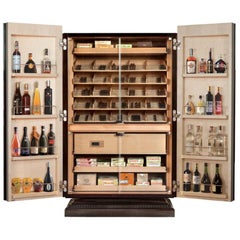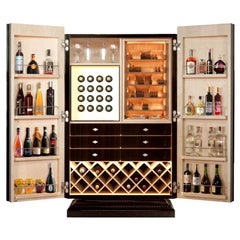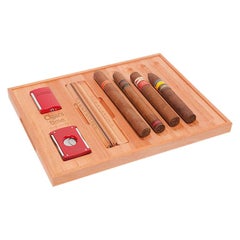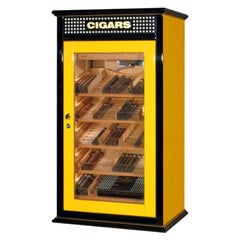Massimo De Munari
21st Century and Contemporary Italian Modern Cigar Boxes and Humidors
Ebony
21st Century and Contemporary Italian Modern Cigar Boxes and Humidors
Ebony
21st Century and Contemporary Italian Modern Cigar Boxes and Humidors
Cedar
21st Century and Contemporary Italian Modern Cigar Boxes and Humidors
Glass, Cedar
People Also Browsed
Mid-20th Century Turkish Modern Turkish Rugs
Wool, Cotton, Foam
21st Century and Contemporary Russian Brutalist Benches
Oak
Vintage 1970s Italian Mid-Century Modern Dry Bars
Chrome
2010s Canadian Art Deco Dining Room Tables
Mahogany, Rosewood
21st Century and Contemporary Italian Modern Sofas
Leather, Wood
Early 20th Century European Art Nouveau Vases
Bronze
21st Century and Contemporary American Mid-Century Modern Benches
Cord, Hardwood
Antique Late 19th Century English Neoclassical Revival Musical Instruments
Bronze
21st Century and Contemporary Portuguese Beds and Bed Frames
Brass
Vintage 1970s American Space Age Table Lamps
Steel, Chrome
21st Century and Contemporary Dutch More Candle Holders
Antler
21st Century and Contemporary Portuguese Modern Figurative Sculptures
Gold
20th Century French Baroque Revival Decorative Dishes and Vide-Poche
Brass
Vintage 1960s Italian Mid-Century Modern Lounge Chairs
Metal
20th Century European Scientific Instruments
Glass, Wood
2010s American Ottomans and Poufs
Zebra Hide
A Close Look at Modern Furniture
The late 19th and early 20th centuries saw sweeping social change and major scientific advances — both of which contributed to a new aesthetic: modernism. Rejecting the rigidity of Victorian artistic conventions, modernists sought a new means of expression. References to the natural world and ornate classical embellishments gave way to the sleek simplicity of the Machine Age. Architect Philip Johnson characterized the hallmarks of modernism as “machine-like simplicity, smoothness or surface [and] avoidance of ornament.”
Early practitioners of modernist design include the De Stijl (“The Style”) group, founded in the Netherlands in 1917, and the Bauhaus School, founded two years later in Germany.
Followers of both groups produced sleek, spare designs — many of which became icons of daily life in the 20th century. The modernists rejected both natural and historical references and relied primarily on industrial materials such as metal, glass, plywood, and, later, plastics. While Bauhaus principals Marcel Breuer and Ludwig Mies van der Rohe created furniture from mass-produced, chrome-plated steel, American visionaries like Charles and Ray Eames worked in materials as novel as molded plywood and fiberglass. Today, Breuer’s Wassily chair, Mies van der Rohe’s Barcelona chair — crafted with his romantic partner, designer Lilly Reich — and the Eames lounge chair are emblems of progressive design and vintage originals are prized cornerstones of collections.
It’s difficult to overstate the influence that modernism continues to wield over designers and architects — and equally difficult to overstate how revolutionary it was when it first appeared a century ago. But because modernist furniture designs are so simple, they can blend in seamlessly with just about any type of décor. Don’t overlook them.
Finding the Right Cigar-boxes for You
Cigars were not always packaged in what we now know as the antique cigar boxes and humidors that have over time become eye-catching decorative objects as well as collector’s items.
Outside the United States, cigar boxes are said to have originated in the 1840s when a German businessman, Hermann Dietrich Upmann of H. Upmann Cigars, bought a cigar factory and opened a bank in Havana, Cuba. Upmann reportedly handed out cedar cigar boxes branded with advertising for the bank as gifts to his banking clients. In the early 1860s, after years of cigars being shipped in big crates or barrels, cigar boxes became a requirement when the United States passed a law that mandated the use of boxes for tobacco producers, which was part of a broader effort to regulate the tobacco industry and generate revenue for the war effort. Humidors, which are moisture-controlled storage boxes that allow a cigar enthusiast to store, organize and preserve a larger collection of cigars, were very popular accessories during the early 1900s onward.
As the use of cigar boxes and humidors became widespread, all kinds of options materialized over the years, with particularly vibrant editions of these decorative objects emerging during the Art Nouveau, mid-century modern and other eras. Visionary designers like Isamu Noguchi popularized the idea of tobacco accessories as art with projects such as his decorative ashtrays.
Today, not unlike antique and vintage ashtrays, cigar boxes are more than practical objects. In fact, there are many uses for an old cigar box even after the cigars are gone. They can be used as planters, tissue boxes or can support your long-delayed effort to organize your sewing and craft supplies. During the Great Depression, an emptied cigar box — perhaps a walnut Art Deco-style cigar box with inlays in bronze and hand-carved decorative geometric patterns adorning its exterior — was occasionally repurposed as a jewelry box.
Antique and vintage cigar boxes — made of wood, metal or other materials — are valuable treasures in some corners of the collecting world, and in your home, they’re exquisite desk ornaments and colorful flourishes to add to your bookcase or mantel. On 1stDibs, find a variety of antique and vintage cigar boxes and other decorative boxes today.



